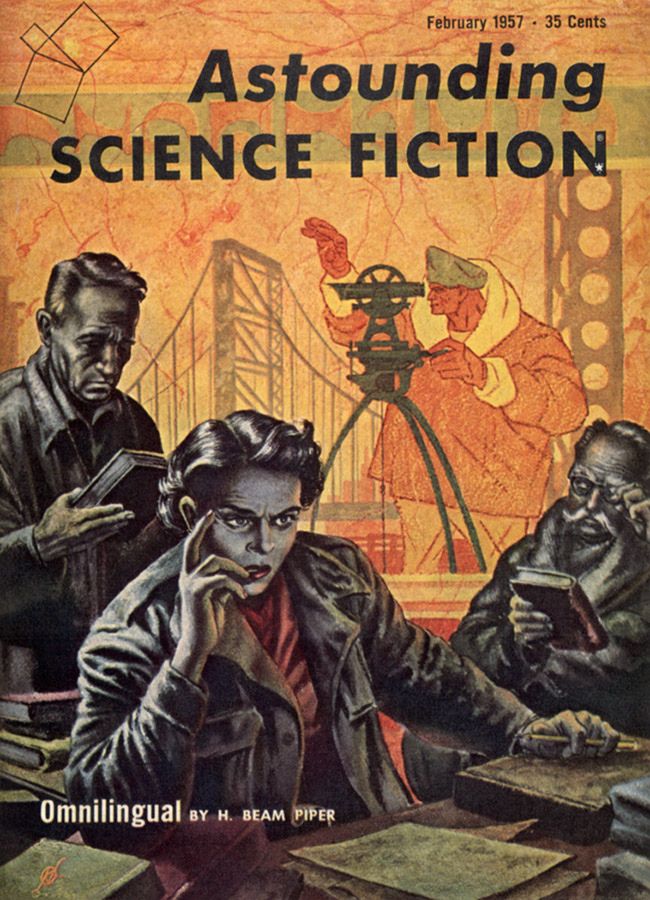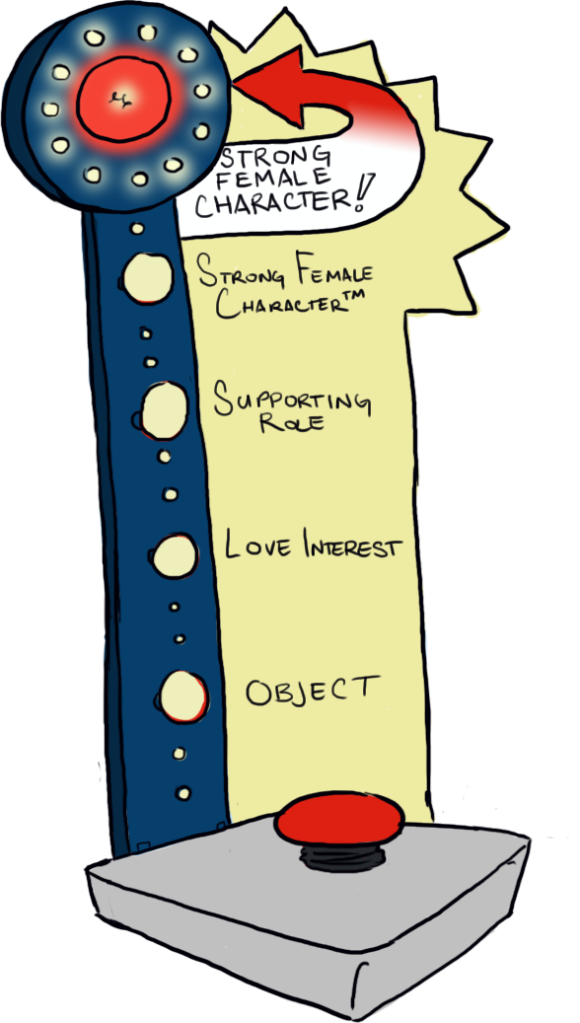H. Beam Piper’s short story, Omnilingual, first appeared in the February 1957 issue of Astounding Science Fiction.
It focuses on Dr. Martha Dane, an archaeologist on a mission to Mars to
study the remnants of Martian civilization fifty thousand years after
its demise. A linguistic specialist, Martha makes it her goal to read
Martian, defying skeptical colleagues, the probability of the loss of
her reputation, and the fact that this could very well prove to be an
impossible task.
Martha
is, first and foremost, a consummate professional. She is
ultra-competent, creating almost single-handedly an entire system of
Martian pronunciation based on sounds that both humans and Martians
could make. She appreciates the work done by her helpers and doesn’t
allow herself to take the bait left by one of the other archaeologists, who is
trying to undermine her efforts. The senior archaeologist on the mission
hand-picked her, and he tells her that her standing is better than his
was at her age. This is no small compliment, considering his reputation
as a much lauded academic at the top of his field.
So
it’s a big deal when she decides to risk her own reputation on a
potentially career-ending wild goose chase. The main antagonist, Tony
Lattimer, constantly reminds her of that fact. He invites her along on
an exploratory mission, if she “can tear herself away from this
catalogue of systematized incomprehensibilities she’s making long enough
to do some real work.” He belittles the value of her efforts, trying to
bring the attention of the on-site reporters to physical artifacts of
the kind that attract his focus. Eventually, it turns out that his derision
came not from his confidence that Martha would fail, but his fear that
she would succeed and steal the limelight from him.
 | |
| Kelly Freas |
The
two are pitted in opposition due to their conflicting goals: Tony wants
fame and recognition, while Martha seeks knowledge for knowledge’s
sake. One of their colleagues sums it up: “Tony wants to be a big shot.
When you want to be a big shot, you can’t bear the possibility of
anybody else being a bigger big shot, and whoever makes a start on
reading this language will be the biggest big shot archaeology ever
saw.” Martha, somewhat naively, asserts in the narration that she
doesn’t want to be a big shot; she just “wanted to be able to read the
Martian language, and find things out about the Martians.” She has no
interest in preserving or building her reputation; instead, she sets out
to take chances, make mistakes, and get messy. (Valerie Frizzle would
be proud.) Her work, while clearly more important than Tony’s -- even
his discovery of the desiccated bodies of a group of Martians -- doesn’t
have the same kind of viewer friendliness or immediate payoff; the
result is fewer workers assigned to her quest for knowledge and more
attached to his search for ratings.
Although
this conflict is not explicitly figured in terms of gender and power,
it’s hard to resist applying that lens. Tony makes himself the face of
the mission, recording voice-over for their broadcasts. He ensures that
he will be the one sent home to bring news of their accomplishments, as
seen from his perspective. He gets to shape the narrative as he sees
fit. Martha, meanwhile, does the heavy lifting with no thought of glory.
Even when she manages to start the translation process, she does so
with the help of a man’s knowledge, and she is only assured credit for
her work when two men step forward to defend her right to it. It’s a
subtle reminder of the story’s original postwar audience and the reality
of a social climate that persists to this day, in which women who make
monumental discoveries enjoy a smaller write-up in history or science
textbooks than their male counterparts.
That
doesn’t mean that the story isn’t remarkably progressive. Not only is
Martha Dane an intellectual titan, she is an intellectual titan who
pulverizes the Bechdel test within five pages of existence. Her
co-worker, Sachiko Koremitsu, discusses her work with her and assists
her with it, often seeming to be the person most supportive of Martha’s
ambitions. Sachiko is, herself, a highly competent worker, restoring
books in such a way that “every movement was as graceful and precise as
though done to music after being rehearsed a hundred times.” One of the
other female characters, a professor of natural ecology at Penn State,
is the one who identifies their most important find as a university,
drawing from her own experience of working in one. Unlike, say, the most
recent Star Trek
film, the story features multiple women in different roles contributing
to a common goal. Also unlike that film, it allows them to speak to
each other about that goal.
 |
| Kelly Freas |
Now,
before I make my ruling on this character, I want to acknowledge
something. Martha Dane is not the kind of character who inspires intense
fannish devotion, sending readers into paroxysms of delight at her
badass antics. In terms of science fiction heroes, she’s no Sarah Connor
or Ellen Ripley. In terms of archaeologists, she’s no Indiana Jones
(though she may have made Kingdom of the Crystal Skull more bearable). What she is is evidence that a protagonist can be a woman for no other reason than “just because”.
Could
this have been the story of a man who overcomes the opinions of his
colleagues to make the greatest discovery in archaeological history? Of
course. In fact, had that been the case, it would have been one of
several very similar narratives. Had it been written according to many
of our ostensibly modern sensibilities, it might have featured a
hackneyed plot focused on Martha’s guilt over choosing her career over a life
with a husband and children, giving us yet another reminder that women
can never “have it all.” Instead, it is the story of a woman who has no
children and no love interest, and the narrative never takes a moment to
mention either. Martha cares about her work, and the story cares about
her work, and, because of this, we care about her work. We don’t even
get the hinted-at distraction of a potentially haunted university and a
final third of the story spent learning Martian from ghostly
apparitions. What we have is the portrait of a woman, who is damn good
at her job, trying to get important stuff done despite the reservations
of her many critics, and succeeding... in space. She may not fight
robots or Nazis, but she is certainly an important character to know.
Verdict: Actual strong female character


No comments:
Post a Comment